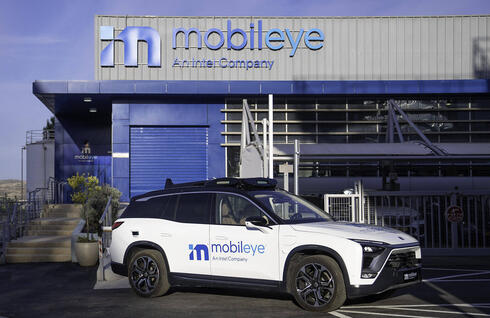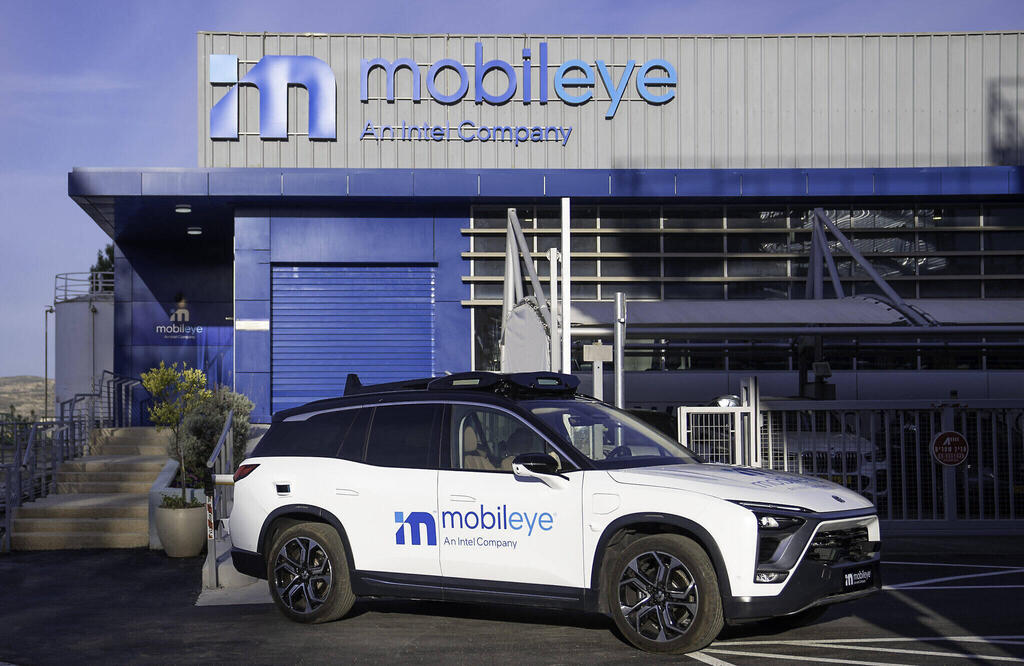
Analysis
Mobileye riding high after shelving fully autonomous vehicle dream
Postponing the driverless car timeline until at least 2050 removed great expectations from the shoulders of the company, which is a market leader in driver assistance systems. Since the IPO, Mobileye's stock has more than doubled and the company has reached a value of $37 billion
What's the reason behind the surge in Mobileye's stock on Nasdaq in recent weeks? On Tuesday it jumped by almost 10% even though the entire market stuttered after the higher-than-expected inflation data. The Israeli autonomous vehicle company, which went public last October, is now trading at a value of $37 billion, more than double the value at which it was issued, which makes it the largest Israeli company in the world in terms of market capitalization. It also brings it closer to the original value at which Intel dreamed of issuing it about a year ago - $50 billion.
Mobileye was issued at a value of $17 billion, which was almost identical to what Intel paid for the company five years earlier.
But Amnon Shashua, founder and CEO of Mobileye, has proven in the months that have passed since the IPO that the decision to go ahead with the move, even at the cost of reducing the value in a difficult market and in a year with almost no IPOs, was correct. Mobileye shares have jumped by almost 124% since the IPO, which is good for everyone. The employees are satisfied, because after years at Intel and being attached to its faltering stock, they again see potential in their capital compensation packages. For Intel, which concluded one of its worst quarters about two weeks ago, Mobileye is now a bright spot. In fact, at its new value, Intel's Mobileye holdings are already close to a third of the value of Intel as a whole, which trades today at a market cap of only $120 billion.
Because of the relatively low value in the offering, Intel avoided selling too many of the company's shares and still owns close to 95% of Mobileye. Now, after the jump in the stock, and in view of Intel's own cash needs, which needs to finance heavy investments without stopping to distribute dividends, it may release more shares to the market.
According to the growing interest of analysts in Mobileye, many of whom have started covering it recently, the reduction of Intel's holding is another piece of good news because, for the most part, American institutional investors do not like to invest in companies where there is one dominant shareholder, as in the case of Mobileye today.
The last few months have been turbulent and unique in the global automotive industry. It became completely clear that the dream of a fully autonomous vehicle, one that drives itself without the presence or involvement of a driver, will not come true soon - not in the next five years and not even in the next ten, as was previously hoped. The consensus today speaks of a possible realization of the dream around the year 2050.
At first glance, this should have been bad news for Mobileye, whose sale to Intel for $15 billion was built on the vision of the fully autonomous car. However, in practice, it was precisely the postponement of this dream that served as the starting point for the rapid upward run being experienced by Mobileye shares. Around $100 billion have been invested in the development of an autonomous vehicle in the last decade according to a recent report by the consulting firm McKinsey, but even Shashua himself, who is considered to be one of the leaders of the field, admits that there will not be a fully autonomous vehicle that will drive everywhere and without a driver in the near future.
Instead, there will be many different types of autonomous vehicles, and that is where Mobileye's technology shines thanks to its assistance and warning systems for drivers.
Since the CES exhibition in January, when it became clear that there will be no level 5 fully autonomous vehicles, but rather an adoption of lower levels of autonomy (level 2.5 and level 3), Mobileye's stock has surged. Since CES, where the company held a detailed presentation, its stock has jumped by 56%.
For some time now, questions have been hovering over the grand vision of driverless vehicles. After the technology matured, it became clear that the regulation was not mature. Questions such as insurance liability and cyber threats have set the field back each time. After several painful Tesla safety incidents, the industry also realized that without almost endless hours of testing, it would not be possible to release the autonomous vehicle. There is simply no way today to predict every possible unexpected scenario on the road and conduct an appropriate experiment.
Because of this, the market is converging in two main directions - autonomous taxis (robotaxis) on designated routes within cities and on highways with the presence of a driver, but without their involvement. In the robotaxi industry, Mobileye works through collaborations with companies that manage the fleets, and has an order book of more than $3 billion in the emerging market.
CES is just the beginning, and in the coming weeks Shashua and his managers will participate in a long series of conferences organized by investment banks. If until now Mobileye was one slide in Intel's presentation, where everyone was mainly focused on the bad news, now the Israeli company is getting a lot of screen time, and it is doing so after publishing excellent financial reports for the last quarter of 2022 and providing a forecast for a handsome double-digit growth of $2.2 billion in 2023 as well. If everything goes ahead without negative surprises, Mobileye will bank $17 billion by 2030. Beyond the traditional driver assistance system (ADAS), which generates most of its revenue with sales reaching $1.86 billion in 2022, Mobileye is focusing recently on the more complex supervision system, which also includes radars and not just cameras.
The next big thing that the market is heading towards, is the release of the driver from active driving in favor of sitting at the wheel and intervening only if necessary, subject to the warnings provided by a Mobileye-type system.
Saying goodbye to the dream of a fully autonomous vehicle for the time being reduces for Mobileye the tough competition with giants, including Google, which developed Waymo, and on the other hand may also drive away some of the competitors, for whom this prolonged intermediate stage is not attractive enough.
In order to take maximum advantage of the great opportunity in the market, Mobileye needs to solidify its system with LiDAR sensors that will bring it closer to fully autonomous driving. According to estimates in the market, Mobileye will go in the direction of significant cooperation, or even purchase one of the players in the market, in order to complete the system. This is because until now, one of the biggest barriers for the leading LiDAR companies, including Israel's Innoviz, was the high price of the sensor that detects movements even in the dark and in harsh weather conditions.















